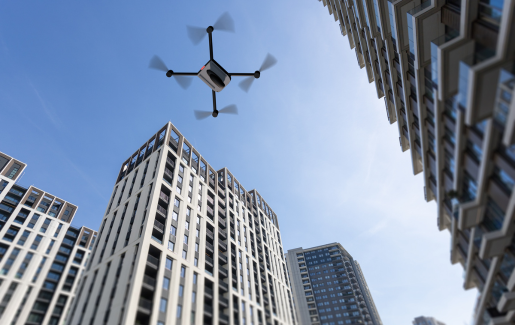 You hear a lot of talk these days about drones and their potential, but let’s level-set on what exactly we’re dealing with in this ever-widening field.
You hear a lot of talk these days about drones and their potential, but let’s level-set on what exactly we’re dealing with in this ever-widening field.
Small, unmanned aircraft vehicles (UAVs), better known as drones, can be used for a significant number of purposeful applications, providing benefits such as increased flexibility for data capture on demand, decreased operational and support costs and reduced safety risks. Drones primary purpose can vary significantly, from remote sensing to transportation of cargo, as can the motivation behind their use, which may be driven by the need to improve safety, increase services and efficiency, supplement existing capabilities or generate profit. This increased usage continues to grow as technological capabilities expand and the price-point to acquire the technology decreases. Manufacturers have put a focused effort into making operations more intuitive while increasing the features and level of support available to the community.
So What is a UAV?
UAV is an industry term recently adopted by the FAA for use in establishing regulations and policies for small, unmanned aerial vehicle operations – in other words drones. There are dozens if not hundreds of industries, fields and technologies connected to UAV’s popularity. While the drone industry has made significant strides in technology, adoption and application, substantial opportunity for growth still exists in these areas. Communications and networking enhancements are also impending, including the use of WiFi and Bluetooth communication and the capability of drones to swarm; providing a mesh network of sensors working collectively. All these advancements and improvements translate to improved access for users, increased manufacturer and developer opportunities, and increased possibilities for entrepreneurship and innovation.
What’s the Demand for Drone Services?
Drone service providers are seeing increased demand in the building design and construction, telecommunications, agriculture and insurance industries, where drones have been used to enhance coverage, improve work-flow and create actionable tasks through artificial intelligence. The need for training and education of remote pilots, designers and maintenance personnel will continue to grow and become in high demand as this industry matures. With the enactment of FAA Part 107 and subsequent evolution of the drone operational framework, training and education entities will need to closely examine the needs of their clients to provide the necessary regulatory-compliance services.
Another service that has great potential is drone consulting. With many potential users unaware or not knowledgeable about all that is necessary to operate UAVs, consultants can assist in addressing the relevant knowledge gaps and act as the bridge between manufacturer and user, matching the two together to optimize the relationship between parties.
What’s Next for the Drone Industry?
Despite the growing opportunities in the drone industry, challenges still exist that may hamper or prevent the level of growth forecasted by industry experts. Some of the most significant challenges to the economic development of this field include:
- Ensuring widescale compliance with regulations.
- Maintaining an equivalent level of safety in operation of drones.
- Anticipating and incorporating technological advancements.
- Cooperating in a competitive landscape.
- Evening competition.
- Informing the public.
- Specializing support.
Preparing for the future and success of the drone industry is going to rely on accurate information coming from all market players. One entity ensuring such communication is CompTIA’s Drone Advisory Council.
Frank Segarra is president of Connexicore and co-chair of the CompTIA Drone Advisory Council.
 Add CompTIA to your favorite RSS reader
Add CompTIA to your favorite RSS reader

